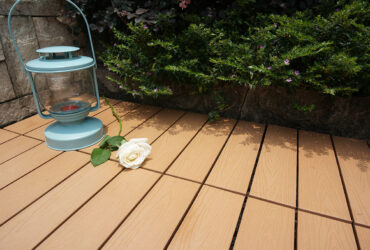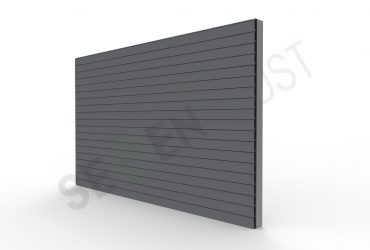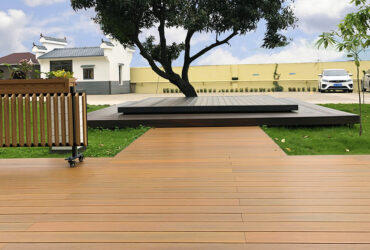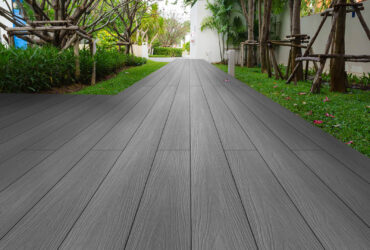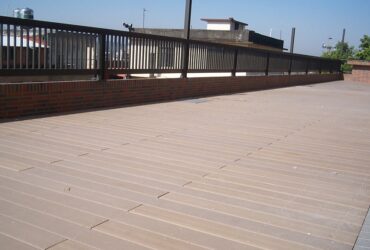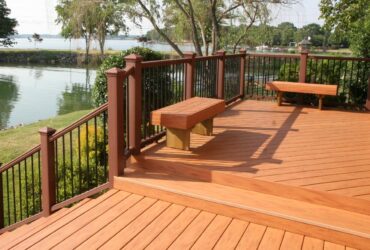Technical Progress of Plastic Wood Sound-absorbing Materials
With the development of society and the continuous advancement of science and technology, people have higher and higher requirements for the sound of the environment where they live, study, and work, and the impact and harm of noise on people are receiving more and more attention. The main method currently used to reduce noise is through the use of sound-absorbing or sound-insulating materials for control. Plastic-wood composite materials have received widespread attention as a new material and meet modern people's needs for sound-absorbing panels.In terms of material properties, plastic-wood composite materials do not have excellent sound absorption properties.However, how to enhance the sound absorption performance of wood-plastic products can refer to the composite nature of wood sound-absorbing materials and other types of sound-absorbing materials. Maximizing the sound absorption performance of wood-plastic composite materials is the research direction of wood-plastic sound-absorbing materials. According to the characteristics and needs of plastic wood products, targeted design and manufacturing of plastic wood sound-absorbing materials will be the future development trend.

Research on various wood composite materials with acoustic properties shows thatThere are certain deficiencies in sound absorption, decoration, environmental protection, practicality, and specific environments. For example, although porous and composite wood composite materials have good sound absorption and noise reduction properties,Its application range is limited by mechanical strength in terms of physical properties. As a new environmentally friendly material, wood-plastic composite materials have gradually received attention in terms of sound absorption performance. The excellent characteristics and application range of wood-plastic composite materials can meet the requirements for sound absorption and noise reduction in specific spaces. Compared with already formed wood composite sound-absorbing materials, Plastic-wood composite sound-absorbing materials should expand their application scope.

First of all, in terms of sound-absorbing materials, we make full use of the porous sound-absorbing mechanism and improve the raw material ratio of plastic-wood composite materials to achieve interconnection of internal pores and improve their sound-absorbing performance. At the same time, the structural design of perforated and slotted wood-plastic composite materials can be carried out by imitating the preparation method of the common wooden perforated sound-absorbing panels on the market.It mainly uses plastic wood composite material as the base material, and makes holes on its surface and back to obtain a resonant sound-absorbing material with holes. The shape of the surface holes can be circular, strip-shaped, micro-porous, etc.The sound absorption performance of plastic-wood composite sound-absorbing panels can be adjusted by adjusting the size, density and shape of the pores. The method of back grooving is mainly to grooving on the back of the plastic board. The main types of grooving include arc grooves, trapezoidal grooves, square grooves and other types.The opening method can broaden the sound-absorbing band of plastic-wood composite materials, improve the sound-absorbing performance in the middle and high-frequency bands, and enhance the decorative and sound-absorbing properties of plastic-wood panels.However, the performance and process of the product need to be improved and improved. The hole pattern is developed in the structure to make it one-time molding and avoid multiple processing, so that it has the best sound absorption performance.

Secondly, as an established new material, plastic-wood composite materials are most widely used as outdoor products.Through the improvement of new processes, the development of new technologies and the application of new structures for plastic-wood composite sound-absorbing materials, more products suitable for indoor use have been developed.For example, flooring, wall panels, decorative panels, ceilings, doors and windows, furniture, bathroom and other products with sound-absorbing properties. In addition to applications in traditional industries, it can also be used in some other industries, such as automotive interior accessories, such as car door guards, door trims, trunks and other interiors.In the future, the development of plastic-wood composite sound-absorbing materials can follow the development path of large-scale product production, diversified composites, full-frequency sound absorption, new structures, practical diversification, and wide application fields.This will be the focus of research on plastic-wood composite sound-absorbing materials.

